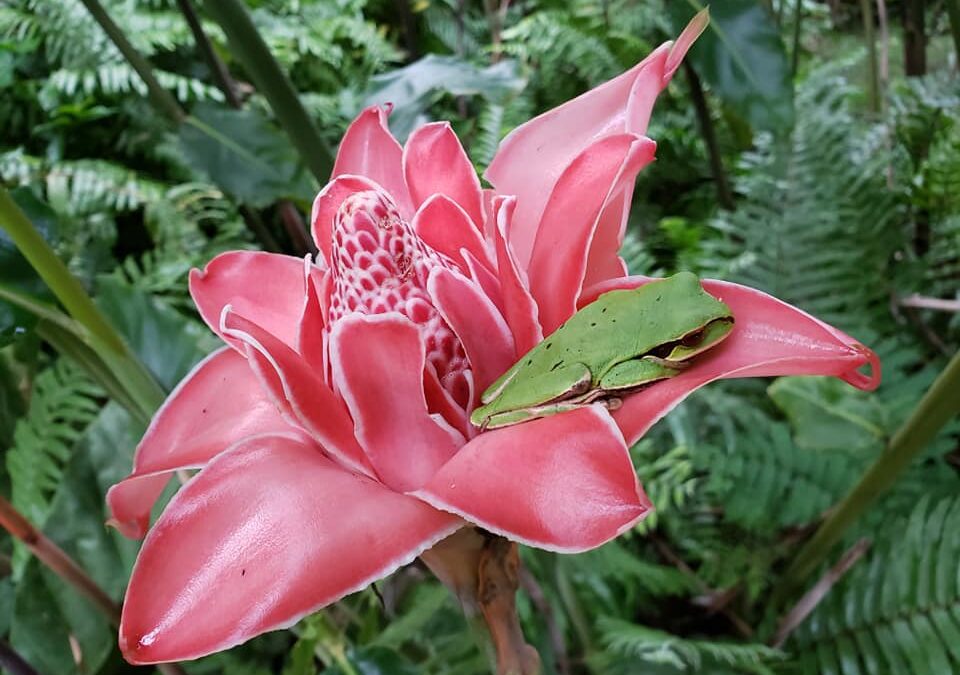
by Ada Porat | Feb 20, 2020 | Change bad habits, Conscious living, Empowering changes, Fear and anxiety, Mindfulness, Resilience, Self-awareness
Gandhi, that great peacemaker and inspirational leader, applied a simple motto to his life. It read, “My life is my message.”
Gandhi understood that we communicate with everyone we encounter each day; our lives are the books read by others, and our message is shared through our attitudes, values, beliefs, thoughts, words and actions – everything that drives us daily.
The message of your life consists of three very important components. Through it:
- You guide yourself to what is possible;
- You guide others about what is most important to you and what they can expect of you; and
- You affect and influence the larger environment around you.
What does your life message say? Your message will always communicate what is most important to you. For your life to have positive impact, it is essential to cultivate awareness of the issues that occupy your time and attention.
You shape your life through the power of your attention before you even make a choice. Whatever you pay attention to, think about, dwell on, talk, worry or obsess about, will increase and multiply until it affects who you become.
- If you constantly think about what frightens you, you will become more fearful.
- If you constantly think about how unfair life is, you will see more reasons to support this view.
- If you believe you are worthless, your choices and behaviors will reflect that belief.
- If you feel entitled to be angry, you will find more and more to be angry about.
Likewise, when you pay close attention to what is positive, hopeful, supportive, uplifting and encouraging, your life and sense of self will inevitably reflect that.
You have the power to choose what you cultivate in the inner garden of your mind!
Whatever your circumstances, you can direct your attention to what will most positively affect your attitudes and actions. Your personal attitudes and values can lift your spirits or dash them far more effectively than anything outside yourself can!
The power of consciously focusing your attention also sets the stage for personal empowerment in your life. To the same extent that you harness your focus to practice self-awareness and self-knowledge, personal happiness and inner harmony become available within. Self-knowledge helps guide optimal choices, so the more self-knowledge you develop, the more self-empowered you ultimately become.
True self-knowledge allows for an honest assessment of strengths and weaknesses – not to judge or avoid the weaker aspects, but to allow for their healing and integration. This process is at the core of all personal growth. It ultimately empowers you to call on inner strengths and capabilities to meet life’s challenges, instead of making excuses for your woundedness or fear. Each time you strengthen or heal an area of woundedness, you become more integrated and more resilient to make empowering choices.
Over time, self-knowledge fosters trust in yourself and in the choices you make. There is no short-cut to true self-knowledge; it is developed in the thick of living where it grows from keen awareness and attention to the unfolding process of your life.
Your life is your most powerful message to others, and self-knowledge allows you to fine-tune that message. By observing your life and actions, you can cultivate the attitude and skills necessary to fulfill your life purpose in the most optimal way.
Here are a few pointers to get you started on honing your unique message:
Observe your impact on other people. Put yourself in their shoes. See yourself from their perspective. Listen to yourself. Get to know your emotional terrain and how it affects everyone around you. When you don’t like what you see, change it!
Listen carefully to your own stories. Your stories shape your character, temperament and sense of what is possible, so know what your stories are. How do you habitually describe the impact of life events on you? What themes do you emphasize? Which stories do you keep harking back to? When you see the impact of the stories you tell, you can change your habitual stories for more optimal outcomes.
Know your strengths and weaknesses. Perhaps even more important than your strengths, is the awareness of what challenges you. Both strengths and obstacles have lots to teach you. True authenticity is found by being aware of your weaknesses and working to improve them, yet choosing to reach for your highest potential.
Find out what matters to you. What do you talk about most persistently? Where are you focusing your time, money and attention? If it does not bring you the outcomes you desire, perhaps it is time to shift your focus.
Notice what makes you happy. What makes you feel genuinely excited and alive? What inspires and moves you? What fascinates you? Focus on these things, and they will surely expand to enrich your life.
Notice what dampens your enthusiasm. What are the thoughts that drive your fearful thinking? When you become aware of the thoughts that trigger your emotions and spin you into fear, anxiety or depression, you can exchange them for positive ones. Emotions are driven by thoughts, not the other way around.
Notice how much you learn from your mistakes. There is no failure in life; there is only learning. Cultivating this attitude will save you from repeating self-destructive behaviors. Adopting an open mind leads to learning and growth; it also allows you to let go of habitual defensiveness and fear because you increasingly act from self-awareness instead of ignorance.
Learn from other people. It has been said that smart people learn from their experiences; brilliant people learn from the experiences of others. When you appreciate the experiences of others, you do not need to repeat them for your own learning; instead, you can avoid pitfalls and focus on optimal actions.
Get to know your inner world. You are the only companion you have for life. By getting to understand your own dreams, hopes and wishes, you’re able to support yourself in the best possible way to reach those goals while maintaining a sense of inner harmony.
Stay curious. Children are wonderful teachers because their minds are not cluttered with value judgments of good and bad. The more curiosity you cultivate about life, the more you will move out of judgment and into the field of possibilities from where miracles happen.
Your life is indeed your unique message and contribution to the world. Self-knowledge is the key to unlock that message so you can communicate most effectively with yourself, others and the world around you.
About the author
©Copyright Ada Porat. For more information, visit https://adaporat.com. This article may be freely distributed in whole or in part, provided there is no charge for it and this notice is attached.

by Ada Porat | Jun 21, 2019 | Conscious living, Cope with change, Empowering changes, Faith, Fear and anxiety, Mindfulness, Peace, Self-awareness, Spirituality
Fear constricts and empowerment frees; and tending the heart allows us to find our way to that freedom.
Fear is a deeply rooted meme in society because every generation on earth has faced the need for survival. In earlier times, fear of abandonment was primary for most individuals, because abandonment by the tribe most often led to death.
Fear is also used extensively by egoic minds and unawakened beings to control, manipulate and force consensus, even when it is false.
Fear is an illusion
Fear is truly false, for it presents false evidence in order to coerce us into submission; it often parades the imminent danger of abandonment to make us cower from the possibility of what other humans might do to us.
Even this grandiose posturing of fear is false! In truth, the Creator cannot abandon creation, for the creation is the very expression of Divinity in physical form. To abandon creation, the Creator has to abandon Himself, and that is not possible. Both Creator and creation are one in consciousness; therefore all divisive concepts of fear and abandonment come from the unawakened ego self.
To make space for the realization of Divine support and protection in our lives, we need to evict the fear of what man can do to us.
We need to understand that fear is a man-made phenomenon that has no power over our eternal souls. Only then can we affirm that we are embraced by a loving Creator who does not and cannot abandon His creation.
Tending the heart
Once we have revealed fear for what it is: false evidence appearing real, there is a Zen Buddhist teaching that reminds us there are only two things in this world we need to do: sit and tend the garden.
Even though the world is full of suffering, it is also full of empowerment to overcome. When we stop and become quiet, we can see this.
And so, we need to tend our hearts so we can transition from fear to faith; from disempowerment to true empowerment.
Take the time to sit and calm your heart; feel beneath the fear to the woundedness there that begs for healing. It takes courage to step away from the crowd, to push away the busy schedule and to sit, tending your heart and your soul. Yet all masters knew how important that is: even Gandhi took one day a week to sit in silence, tending the garden of his heart so he could be the change he sought in the world.
Right action
When we’ve taken time to tend the heart, we can engage in meaningful action. How you do your work is as important as what you do. Never act out of guilt, because then you are propagating the very suffering of the world. If you truly wish to grow love and not anger, fear or guilt, then do what you do from love, and not from any other emotion.
When acting out of guilt, anger or fear, we act out of ego, no matter how noble the cause we engage in.
Expand your circle
We also need to stay connected to the whole of life, even as we figure out our individual parts of the journey. Don’t draw your circle of life too small. You are more than one person – you are one with life itself, expressing in this life through consciousness.
Reclaim your connection
It is in sitting and contemplation that we recognize the stillness of the Creator Presence and our connection to all. That awareness can foster in us spontaneous caring and compassion for the woundedness of the world, so we commit to the awakening and care of the world.
Many brave souls have gone before to show the way. I often find inspiration in the beautiful words of author Diane Ackerman’s School Prayer:
“In the name of daybreak
and the eyelids of morning
and the wayfaring moon
and the night when it departs,
I swear I will not dishonor
my soul with hatred,
but offer myself humbly
as a guardian of nature,
a healer of misery,
a messenger of wonder,
and an architect of peace.
In the name of the sun and its mirrors
and the day that embraces it
and the cloud veils drawn over it
and the uttermost night
and the male and the female
and the plants bursting with seed
and the crowning seasons
of the firefly and the apple,
I will honor all life
—wherever and in whatever form
it may dwell—on Earth my home,
and in the mansions of the stars.”
Centuries earlier, the Buddha taught: “To live in joy and love even among those who hate; to live in joy and health, even among the afflicted; to live in joy and peace, even among the troubled; quiet your mind and tend the heart, and free yourself from fears and confusion and attachment, and know the sweet joy of living in the Way.”
What is your gift to the world that only you can bring? Listen closely, push beyond fear to find it, and then commit to do it with love and joy!
About The Author:
©Copyright Ada Porat. For more information, visit https://adaporat.com. This article may be freely distributed in whole or in part, provided there is no charge for it and this notice is attached.

by Ada Porat | Feb 12, 2019 | Conscious living, Life skills, Mindfulness, Peace, Personal growth, Self-awareness, Spirituality
Of the many things that cause us pain, our expectation that life should be perfect, is one of the primary causes. The idea that there exists a perfect Shangri-La somewhere that we can somehow locate, is a form of magical thinking that sets us up for false expectations and disappointment..
It creates dissatisfaction with the life we have and pulls us out of the present moment into an unending search for perfection out there somewhere. It also leads to frustration when our efforts fail to create the perfect outcomes we think we need, deserve or desire.
If we truly desire inner peace, we need to trade this magical thinking for a more accurate version of truth. Zen teaches that to find peace of mind, we need to “think of life as a series of imperfect facts.”
I have used this helpful reminder in countless ways in my personal practice.
This phrase reminds us that our reactions and outrage often stem from an unconscious belief that life should be perfect – or that our individual lives and outcomes ought to be perfect for us to have peace.
Because this limiting belief operates beneath the surface, we may be unaware of it. If I were to ask you, “Do you expect your life to be perfect?” you would almost certainly say no.
And yet, we get upset when our lives do not match our idealized dreams! This process is known as cognitive dissonance – the conflict between what we want and what actually shows up.
It is worth checking how often you become angry or frustrated when something relatively minor goes wrong, or when events don’t turn out the way you wanted. You may even feel outraged when life refuses to follow your commands!
With some mindfulness, we can turn such moments into Zen moments: we can think of life as a series of imperfect facts. And know, too, that sometimes those apparent imperfections are really blessings in disguise.
In the same way that we can become outraged when life “goes wrong,” we can sometimes react very harshly when people let us down, or when our expectations are shattered by some very human behavior.
Our relationships do best when we can accept that people sometimes will behave badly, inconsistently or thoughtlessly. Sometimes they will let us down.
As long as this doesn’t happen all the time and does not put us in danger, it is healthier for everyone when we can see these behaviors as part of the big picture and get over the smaller disappointments.
When we focus on let-downs and disappointments, our relationships weaken and may even disintegrate. By choosing instead to see others as flawed as we are, yet generally doing their best, our relationships with all of life become easier, more relaxed and far more rewarding.
Mother Teresa reminded us of that when she said:
“People are often unreasonable and self-centered. Forgive them anyway.
If you are kind, people may accuse you of ulterior motives. Be kind anyway.
If you are honest, people may cheat you. Be honest anyway.
If you find happiness, people may be jealous. Be happy anyway.
The good you do today may be forgotten tomorrow. Do good anyway.
Give the world the best you have and it may never be enough. Give your best anyway.
For you see, in the end, it is between you and God. It was never between you and them anyway.”
When we can see the perfect unfolding of life as a series of imperfect facts, our acceptance of what is, brings freedom and joy.
About the author:
©Copyright Ada Porat. For more information, visit https://adaporat.com. This article may be freely distributed in whole or in part, provided there is no charge for it and this notice is attached.

by Ada Porat | Feb 25, 2018 | Mindfulness, Self-awareness
Some people possess a very special gift: they embody the presence of peace within. When we have a chance to sit close to someone like that, we also feel calm. They radiate inner peace in a way that deeply touches us. The presence of their inner peace stills our wandering thoughts and calms our anxieties.
Whenever we have a chance to be with a soul who lives in the eternal Now, we can feel this subtle source of peace and joy. Through their presence, we’re able to connect to that source as well. Their inner tranquility calms the turbulence in the world around them, and they teach us by example how to find peace within.
You too can learn to live this way. Living from a place of inner peace is not reserved for gurus and spiritual masters only. It is a learned behavior, just as constant worry is learned.
You can shed your learned ways of hurry and move through life as if there is no need to be somewhere else in this moment. You can move through life as if you already are exactly where you need to be — as if you are arriving with every step. Every moment of your waking consciousness can bring you closer to that perennial peace within —embodied in the presence of Now.
When you choose to move through life this way, you dissolve your sense of isolation in the world. You start remembering that you’re not a separate individual rushing about to avoid bad and reach for good. Instead, you start feeling again your connection to the whole, like droplets remembering they belong to the ocean. The drop of water does not need to do anything – it simply feels the embrace of the ocean and lets itself be carried along by the current in each present moment.
That inner current of peace is your spiritual core; the inner voice that whispers to you whenever you tune out the brassy loudness of the material world. To truly feel alive and at peace, it is essential to learn how to tune in to the presence of one’s spiritual core in each moment, and to live from that inner presence instead of reacting to the outer chaos.
When we forget this, we act in ways that cause pain or separation between ourselves and others. We become reactive; we may misunderstand others and lash out in fear or anger. And afterwards, we beat ourselves up with guilt, shame and regret.
You cannot change the past, but you can release its hold over you. The power of healing the past lies in this present moment. From this place of mindfulness, you can choose forgiveness and reconciliation to clear away misunderstandings, anger and grief from the past. It is exactly in this moment, Now, that the work of healing must be done to set you free.
No matter how difficult the challenges of the past were, they are over. You are here Now, reading these words. You are alive Now! Treasure the fact that you are alive in this moment and embrace the opportunity for healing it offers. Sit down quietly and go within: meditate to look deep and sweep away the woundedness, prejudice and mistakes of the past. Accept the opportunity offered by the presence of Now, so you can be free.
This present moment offers a gift. It allows you to forgive, to heal and return to peace within, which is your natural state.
Life is present in this moment, waiting for you to choose what to do with it, and your choices determine the quality of your peace within.
About the author
©Copyright Ada Porat. For more information, visit https://adaporat.com. This article may be freely distributed in whole or in part, provided there is no charge for it and this notice is attached.

by Ada Porat | Jan 22, 2018 | Conscious living, Fear and anxiety, Resilience, Self-awareness
Are you feeling rushed as you read these words right now? Welcome to the modern world of constant connectivity! And the faster our pace of life, the more essential it becomes to nurture our inner life for resilience.
We’re living in an amazing age, every bit as futuristic as the Jetsons or Star Trek sagas some of us grew up with. I love being able to connect face to face with clients on the other side of the world, or download a song in a second. Yet this continuous connectivity also poses a challenge: many of us have trouble disconnecting from all the intensity for some peace and quiet. Our inner life can silently wither even as we chase the outer holy grail of success.
The thinner we spread ourselves, the more we skitter across the surface of our outer lives, never going deep. And technology can track us down just about anywhere, anytime, it seems there is literally no escape!
Trying to keep up the pace can take a huge toll. That stress shows up in suppressed immune systems, high blood pressure, anxiety, depression, insomnia, and digestive ailments.
What is needed is more resilience: the ability to rebound from setbacks and challenges, similar to the elasticity of a rubber band returning to its original shape after stretching.
Resilience can be developed with practice, just as you can develop muscle strength by exercising.
The process of developing resilience starts with a reminder that our true nature is eternal and not time-bound. We literally need to disconnect and remember that our souls exist in timelessness. Poet E. E. Cummings put it this way:
“How fortunate are you and I
whose home is timelessness:
We who have wandered down
from fragrant mountains of eternal now
to frolic in such mysteries
as birth and death
a day, or maybe even less…”
By connecting to the soul’s eternal nature, we regain our inner sense of poise. We can learn to not push into the future, nor run from the past, but to walk our path in this present moment with unhurried grace. Lama Surya Das calls this place of the eternal present “Buddha Standard Time.” In his book with the same title, he quotes Liu Wenmin, an early sixteenth century poet, making peace with time:
“To be able to be unhurried when hurried;
To be able not to slack off when relaxed;
To be able not to be frightened
And at a loss for what to do,
When frightened and at a loss;
This is the learning that returns us
To our natural state and transforms our lives.”
The busier we are, the more we need time out of the rat race to regain perspective and renew ourselves from within. It is our inner life that ultimately sustains us, and not the outer bells and whistles.
Honoring your inner path of truth is essential for a meaningful life. Research by palliative caretaker Bronnie Ware showed the number one regret of dying people is wishing they’d had the courage to live a life true to themselves, and not the life others expected from them.
How do we honor our inner compass amid the frenetic demands of life so we can live without regrets? Three concepts come to mind: Stay true. Stay present. Follow the energy.
- Stay True:
A commitment to truth, at all levels, is automatically a commitment to freedom. It is always truth that sets us free. And where Higher truth prevails, why would anyone need to lie?
In Shakespeare’s Hamlet, Polonius advises his son Laertes:
“To thine own self be true, and it must follow, as the night the day, thou canst not then be false to any man.”
Any “security” gained through loss of inner freedom actually submits to fear at the cost of integrity and truth. A nation that puts national security above personal freedom has lost its true power base. In saying this, I am not suggesting that a country should suddenly lower its guard against all enemies (both real and imagined). I am saying that addressing the outer issue before addressing the inner conditions in consciousness that created it, will simply not solve the problem.
This is why politics is not the answer to what plagues the human condition. Politics is like a trainer who seeks to harness and train the collective energy so it will function for the good of all. It will ultimately succeed only at the lowest common denominator.
True freedom is an inside job that starts with elevating consciousness at the individual level by aligning to Higher truth. That alignment fosters confidence, resilience and trust.
- Stay Present.
Stay in the Now. Past and future are always adjuncts to that. Don’t let the busy-ness of the world rob you of this priceless gift of NOW.
That means you need to make peace with your past so you can live without regrets. It also means you need to release the need to control the future because that is an illusion causing unnecessary anxiety.
You and I do not know what the future will look like because it is not yet manifest. There is no other human who can accurately predict how life will play out, because the future is created through a myriad possibilities and individual choices that ultimately manifest when conditions are favorable.
There are no veterans or pros for where humanity is going now – it is new to all of us. The choices you and I make in each present moment, will collectively decide the future that unfolds for us. So let’s nurture our inner resilience and stay true to our path right here, right now!
- Follow The Energy.
Let your body be your barometer. It will show you what you really need. You always create the perfect scenarios to get what you really need.
There are no good or bad energies. All people and things are just energy… which is, essentially, neutral. Energy is as neutral as the electric current that lights up both a cathedral and a drug lab.
Some frequencies of energy may seem particularly useful and attractive to you for where you’re at in your individual consciousness right now. Other frequencies can repulse for the same reason. That does not make them good or bad; they are simply useful to your journey at this particular time or not.
Pay attention to the things that attract or repel you; they are clues to what you need to do, choose or say in order to move forward on your path.
Together, these three principles can help you cultivate a richer and more resilient inner life, no matter how much turmoil you face in your environment.
About the author
©Copyright Ada Porat. For more information, visit https://adaporat.com. This article may be freely distributed in whole or in part, provided there is no charge for it and this notice is attached.
by Ada Porat | Feb 22, 2017 | Conscious living, Emotional healing, Self-awareness
Deep beneath the social masks and happy faces we present to the outer world, lurks a hidden shadow: an angry, wounded, fragmented or isolated part of us that we tend to bury or ignore. Integrating the shadow is essential for a balanced life.
The shadow compounds all the dark impulses—hatred, aggression, sadism, selfishness, jealousy, resentment, sexual transgression—that are not socially acceptable and thus hidden out of sight. The name originated with Carl Jung, but its basic origin came from Freud’s insight that our psyches are dualistic, sharply divided between the conscious and unconscious. Socially accepted norms require that we suppress our unconscious side, but what hides in the shadows will attempt to come out.
Whatever qualities we dare not face within ourselves, we tend to project out onto others. Everyone carries a shadow, and the less it is integrated in a person’s conscious life, the blacker and denser it is. The work of becoming spiritually conscious requires us to face and integrate the shadow, or else it will sabotage our best intentions.
Put another way, one does not become enlightened by imagining light, but by making the darkness conscious so it can be integrated. Rampant shadow projection is a hallmark behavior of the spiritually unconscious.
The shadow always wants to be heard – when ignored, it turns ever more mean and nasty. Resisting the shadow simply solidifies it, causing suffering. This arrogant behavior causes pain and suffering in anybody who has suffered because of the shadow’s cruelty, either in themselves or others.
And herein lies a great gift. Whenever the shadow projections out there trigger an emotional response in us, it means that there is a need for forgiveness, healing and acceptance. This emotional charge is a dead giveaway that we need to do some healing within ourselves so we can become neutral to the shadow projections out there.
In other words, we’re able to recognize the shadow projections out there because the same potential exists within each of us, whether we act on them or not. Most of us are uncomfortable with this truth, which causes us to further suppress and project our own shadow. In truth, the enemy is not out there but in each of us.
The enemy is in the White House, but the enemy is also Muslim; the enemy is a Jew, the enemy is a terrorist or a non-documented immigrant; the enemy is the person we choose to blame for our own situation, and the refugee from whose needs we recoil… the enemy is in all of them, and also in you and me. In truth, the enemy is really not an enemy at all. It is but a dark reflection of the shadow that resides in each of us and gets projected out there onto whomever we choose to judge and condemn. This enemy is an orphan, cast out of our consciousness and wandering the dark alleys of our collective unconscious as the shadow.
We cannot fight the shadow with more shadow, for that simply escalates issues and increases suffering on all sides. Instead, we need to heal the shadow by bringing the light of consciousness to it. The wounds in consciousness can only be healed through consciousness.
Bringing shadow material into consciousness drains its dark power, and can even recover valuable resources from it. The greatest power comes from having accepted our shadow parts and integrated them as components of ourselves.
The shadow can be a source of emotional richness and vitality; and integrating these orphaned aspects of our being can lead to restoring personal wholeness and leading more authentic life. We start this process by recognizing the shadow existing in us, forgiving ourselves for our fear and aversion of it, acknowledging it for what it is, and learning to use its powerful energies in productive ways.
In their book, Romancing the Shadow, authors Connie Zwieg, Ph.D. and Steve Wolf, Ph.D. share effective ways of decoding the messages of the shadow in daily life to deepen one’s consciousness, imagination, and soul.
Integrating the shadow takes honesty and courage, but the rewards are immense. First, the suffering stops. This is the surest sign that we have chosen the right path again: the unnecessary suffering stops.
More importantly, new possibilities emerge everywhere in life. Author David Richo calls this work “shadow dancing” in his book, Shadow Dance: Liberating the Power and Creativity of Your Dark Side. Changing our relationship with the shadow allows us to discover a critical shift in our viewpoint: Where everything seemed sterile and barren and there seemed no possible answers before, now everything seems possible.
How to manage the shadow currently rampaging through society? A few things come to mind.
- Become part of the solution. Instead of cursing the darkness, align with the light by consciously changing your tribal attitudes, words, and actions. Refuse to dehumanize others based on their race, religion or background. Recognize that the world’s wrongs have their seeds in you and me as well. The potential for good or evil exists in each one of us. Once we begin to acknowledge that in ourselves, the shadow immediately begins to diminish.
- Recognize opportunities for healing, change and growth. See the rampaging shadow out there for what it is: an opportunity for each of us to heal. Now is the time for true shadow work to begin. The spiritually unconscious cannot do this work; it needs to start with you and me. When we take responsibility for the work of forgiveness and healing in our own lives, we will find the courage to start doing so on a larger scale. That is how we heal the world; not with bigger weapon systems, more name-calling or hatred.
- Strengthen your commitment to higher goals, vision and values. Nurture your core values, your soul and your spirituality. Meditate, spend time in nature, do energy work to set your soul free, and cultivate an attitude of gratitude.
- Learn how to practice detachment. Do your very best to continuously release thoughts of resistance and attachment, for they are simply sides of the same coin. The Sedona Method has a wonderful phrase to summarize this process: “Embrace that which you resist, and surrender that to which you cling.” Detachment frees you from anxiety so your inner space can be peace.
- Remain in the Now. The past is over and no amount of worry can change it; the future is not here yet; so stay in the present moment. This moment is a golden opportunity to grow in consciousness. Choose to see every event of your life as a gift from heaven, sent your way with the sole purpose of enlightening you.
- Stay open to the possibilities. During turbulent times, the ego works overtime to find some security. In the process, we often settle for the safe rather than the good. When you have faith in a Higher Power and stay open to all the possibilities in the Field (even those you have not yet conceived of), you are making space for optimal outcomes to show up.
- Keep learning. Perhaps you cannot change all the things out there that trouble you. But you can learn something new each day that will help you outgrow the limitations of tribal thinking and become the highest expression of yourself. What will you learn today? Tomorrow? Next month? It is the accumulation of small changes over time, that feed the evolution of your consciousness.
- Stay involved. When faced with the shadow and all the cognitive dissonance it creates, it can be tempting to hide your light. You may want to play it safe, go into denial and avoid conflict. I’m here to tell you that you were created for bigger things! You are on this planet at this time because at some level, you recognized the potential for growth, change and fulfillment offered by the very things you call challenging in your life right now. This is not the time to find excuses for remaining passive, or to wait for heaven to come and rescue us. We are the ones that we’ve been waiting for! So muster your courage, stand tall, breathe in faith and let your light shine, for you are meant to be here now! Become an instrument of change and healing, and your own fulfillment will follow.
Finally, remember that shadow is aligned with the ego and never wins in the end!
About the author
©Copyright Ada Porat. For more information, visit https://adaporat.com. This article may be freely distributed in whole or in part, provided there is no charge for it and this notice is attached.





